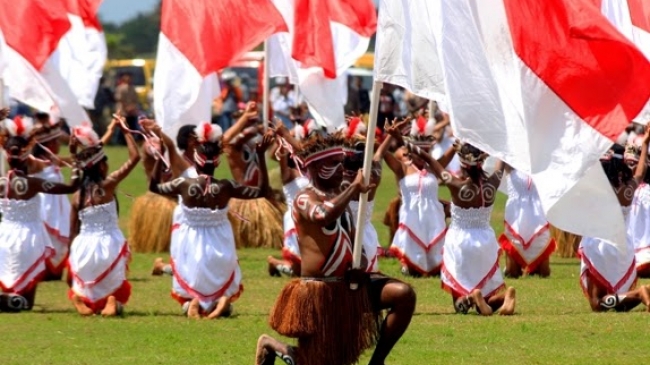Papua, an island rich in cultural diversity and tradition, is often perceived as being threatened by modernization. Many argue that the currents of globalization and technological advancement can erode local cultural values. However, this perspective warrants deeper examination. In reality, Papua’s culture not only endures but also adapts and evolves in the face of modern challenges.
1. Strong Cultural Diversity
Papua is home to over 250 ethnic groups, speaking more than 300 different languages. This diversity creates a unique strength for the Papuan people. According to data from the Central Statistics Agency (BPS) in 2020, approximately 80% of Papua’s population remains engaged in traditional cultural practices, such as rituals and festivals. Traditional ceremonies, dances, and handicrafts are still preserved and form an integral part of daily life. For instance, cultural events like the Baliem Valley Festival in Wamena serve as platforms to showcase Papua’s rich cultural heritage to the world while reinforcing community bonds.
2. Adaptation Through Technology
Modernization does not necessarily equate to the erasure of local culture. On the contrary, technology can serve as a tool for preserving and promoting Papuan culture. Research conducted by Dr. J. M. Wanggai, an anthropologist from Cenderawasih University, indicates that many Papuan artists and craftsmen utilize social media to market their works and reach a broader audience. In this way, they not only maintain traditions but also adapt them to remain relevant to younger generations. The use of digital platforms to document and share Papuan folklore helps the new generation recognize and appreciate their cultural heritage.
3. Education and Cultural Awareness
Education plays a crucial role in preserving Papuan culture. According to data from the Ministry of Education and Culture, over 60% of schools in Papua have integrated lessons on local culture into their curricula. This approach teaches younger generations to value and understand their cultural heritage. Additionally, training programs for youth to learn about traditional arts and crafts are increasingly prevalent. Dr. R. S. Siregar, a cultural education expert, states that “education based on local culture can strengthen the identity and pride of young generations in their heritage.
4. Role of Communities and Government
Local communities and the government also play vital roles in preserving Papuan culture. Various initiatives are undertaken to support cultural activities, such as funding for festivals, arts training, and the development of culture-based tourism. According to a report from UNESCO, investment in the preservation of local culture can enhance community welfare and strengthen cultural identity. Local governments often collaborate with indigenous communities to ensure that development does not overlook local cultural values. Thus, modernization can proceed alongside cultural preservation.
5. Global Awareness of the Importance of Local Culture
In the era of globalization, there is a growing awareness of the importance of preserving local cultures. Many international organizations support efforts to safeguard cultural heritage, including that of Papua. According to a report from the World Culture Forum, over 70% of respondents believe that the preservation of local culture should be a priority in development. This awareness creates opportunities for the Papuan people to showcase their cultural richness to the world while gaining support for preservation efforts.
Conclusion
Papua’s culture is not threatened by modernization; rather, it demonstrates resilience and the ability to adapt. With its rich diversity, the use of technology, education focused on culture, community support, and global awareness, Papuan culture can continue to thrive and evolve. Modernization is not the end of Papuan culture but a challenge that can be met with creativity and a spirit of preservation. Thus, Papua’s culture will remain an essential part of Indonesia’s national identity, even amidst the currents of change.










